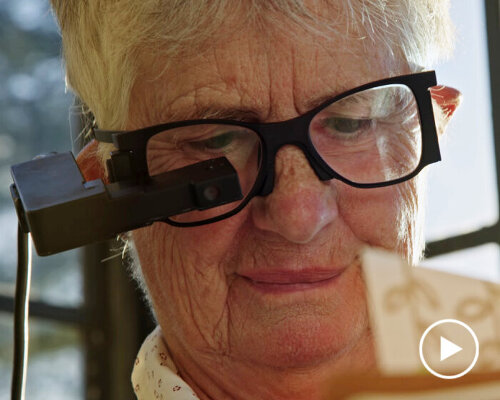Eye implant with solar cells can restore vision
Doctors and scientists at Science, a tech company started by Neuralink co-founder, show how blind patients can restore their central vision using an eye implant with tiny solar cells. Titled the PRIMA project, the study sees the creation of a retinal implant that can restore the central vision in people affected by geographic atrophy, which is a late stage of age-related macular degeneration. The latter causes the gradual loss of photoreceptor cells in the retina, leading to central blindness while leaving peripheral vision mostly intact. The PRIMA system combines a small eye implant with external glasses that can transmit light and data to the device using embedded solar cells in the retinal object. The PRIMA implant is a photovoltaic device that converts light into electrical signals.
It is a square chip measuring 2 millimeters by 2 millimeters and only 30 micrometers thick and contains microscopic electrodes that act as artificial photoreceptors. It is surgically placed under the retina, in the area where natural photoreceptors have been lost due to geographic atrophy, and the system operates with a pair of glasses. These glasses capture visual scenes through a small camera mounted at the front, and the images are processed and converted into near-infrared light signals, which are projected onto the implant through the eye’s pupil. The implant absorbs this infrared light and transforms it into electrical impulses. These impulses stimulate the remaining retinal cells, which then send signals through the optic nerve to the brain. The result is the perception of shapes, letters, and objects in the central visual field, restoring the sight of the blind people affected by geographic atrophy.
all images courtesy of Science
Glasses with video signal help make the details clearer
The eye implant works like a miniature solar panel, or solar cells, with each of its pixels receiving light and producing an electric current. The photovoltaic surface is made from semiconductor materials similar to those used in solar cells, coated to prevent tissue reaction, and the entire chip is sealed to protect internal components from eye fluids. These signals stimulate the retinal neurons above the implant, which then ‘communicate’ with the brain’s visual cortex. It creates form vision, meaning that instead of just perceiving flashes of light, the user can identify defined shapes, letters, and words. Patients wear the glasses with a video processing unit, and the video signal is processed to improve the contrast and detail. Users can adjust a zoom function to magnify text or objects, allowing them to read printed material and recognize outlines or patterns in their surroundings.
The PRIMA system was developed from early research at Stanford University led by Professor Daniel Palanker. The clinical study tested the eye implant with solar cells on 38 patients at 17 hospitals in five countries, with the results showing that 80 percent of patients experienced meaningful improvement in visual acuity. Many participants were able to read letters, numbers, and words using the implant, and on average, patients showed a gain of 25.5 letters on the standard ETDRS vision chart after 12 months. The procedure also didn’t cause a decline in patients’ remaining peripheral vision. The implant was found to be safe for placement under the macula, and most side effects appeared within the first two months after surgery and resolved within the same period. Based on these outcomes, the study’s Data Safety Monitoring Board recommended approval of the PRIMA system for use in Europe, with the regulatory review being ongoing in both Europe and the US for usage.
the glasses come with a video processing unit to improve the contrast and details of what the patients see
the photovoltaic material is embedded into the implant
view of what the patients can see (right)
the PRIMA system combines a small eye implant with external glasses
the PRIMA implant is a photovoltaic device that converts light into electrical signals.
the PRIMA system was developed from early research at Stanford University
project info:
name: Subretinal Photovoltaic Implant to Restore Vision in Geographic Atrophy Due to AMD / PRIMA
company: Science Corporation
study: here
The post how can blind patients see and read again? scientists use eye implant with tiny solar cells appeared first on designboom | architecture & design magazine.

